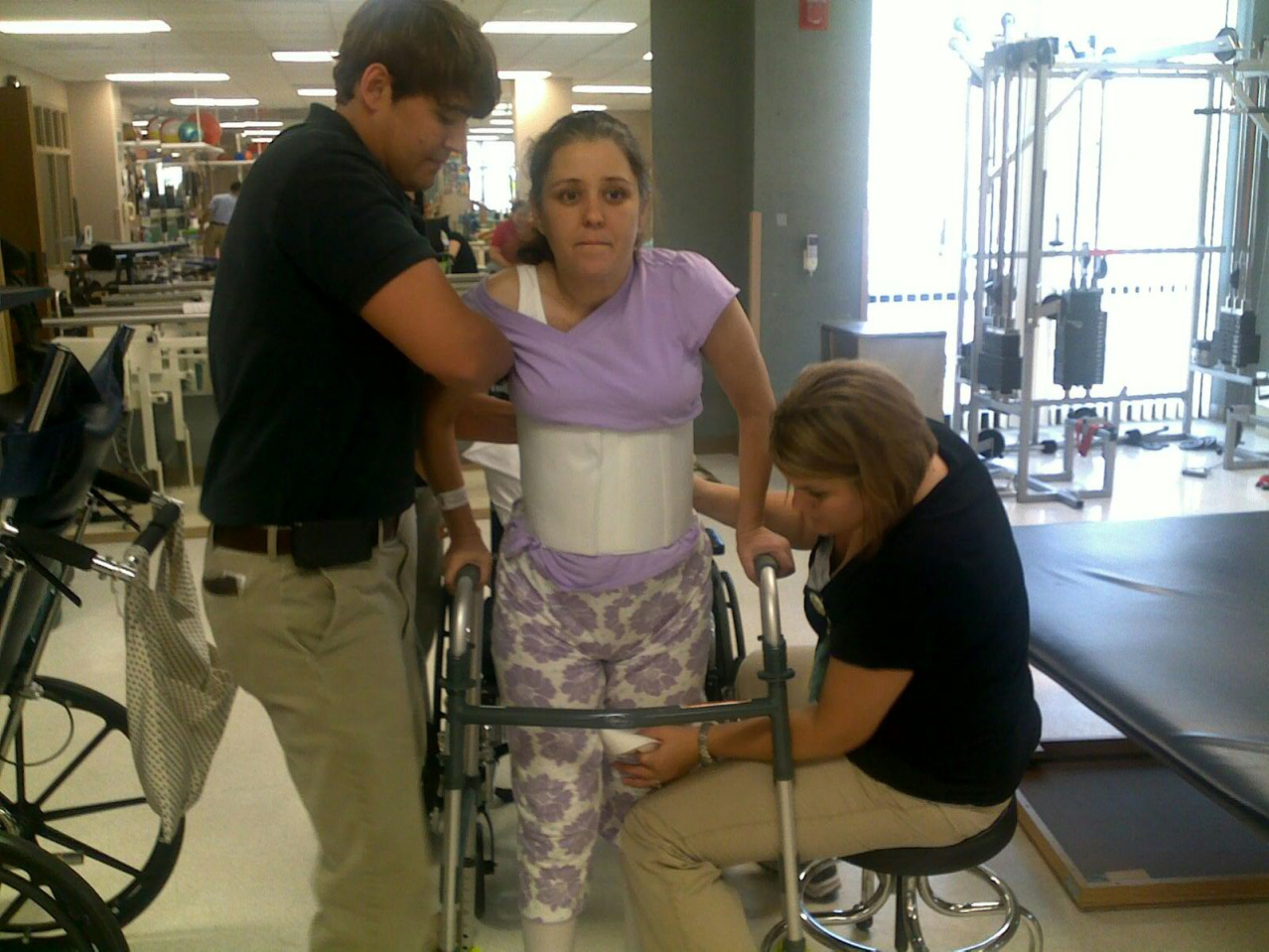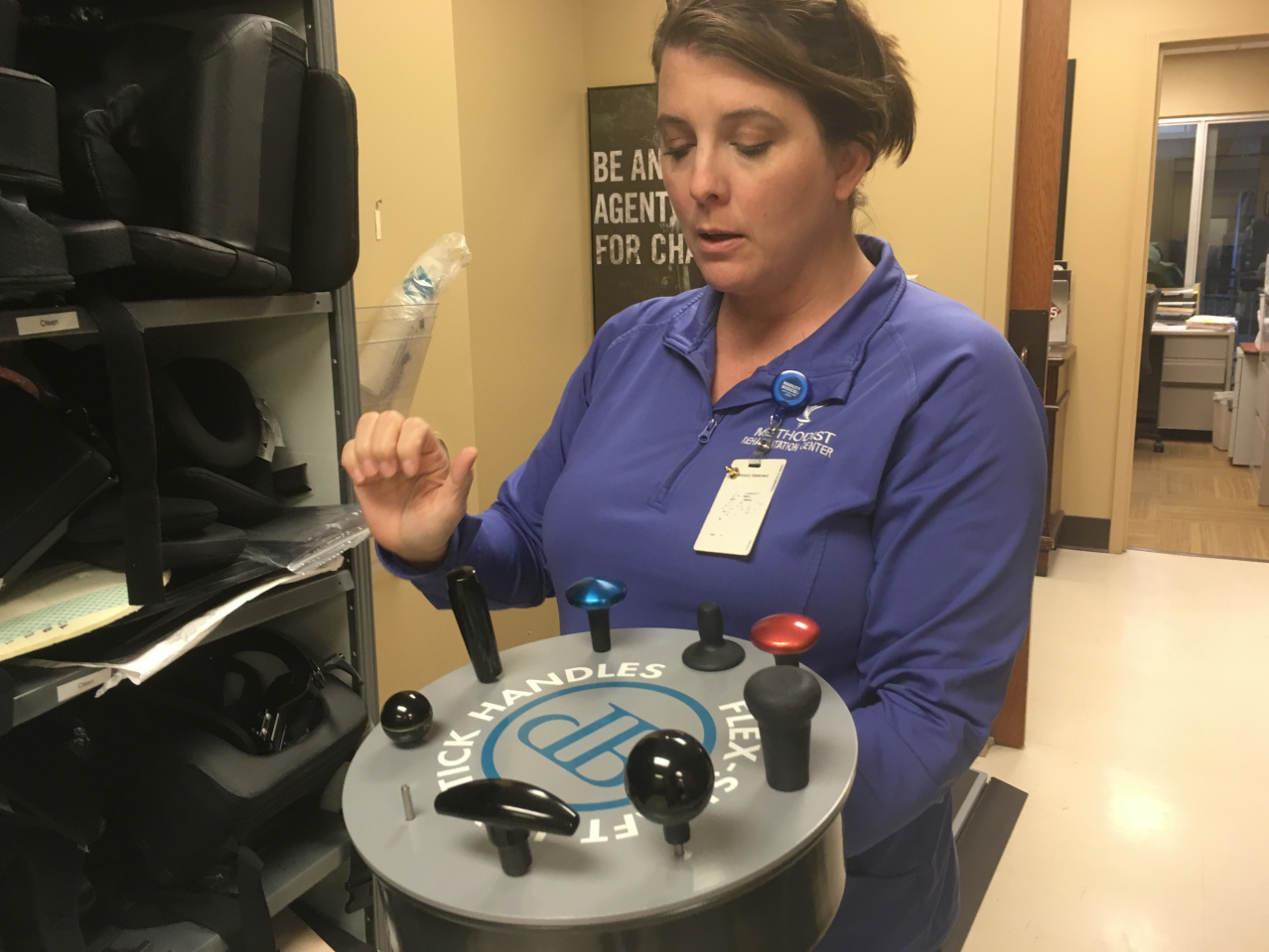Featured
Oxford Stories: Assistive Technology Helps Improve Patients’ Quality of Life

Singleton works with physical therapists and adaptive technology at Methodist Rehabilitation Center.
Cassandra Singleton has been using assistive technology since 2010, after an infection that left her paralyzed from the neck down with a damaged spinal cord.
Although doctors told her she would never regain ability to walk, she was determined to work hard and prove them wrong.
With the help of many physical therapists, countless braces, wheelchairs and other assistive devices to help her, Singleton is now able to walk on her with no other assistance but a small leg brace. She said the downside to assistive technology is the availability.
“It is very cost prohibitive and usually not covered by medical insurance,” she said.
Imagine needing assistance to carry out normal activities of daily living, such as typing a paper or even eating a meal.
This is a daily struggle for many like Singleton who live with disabilities. Fortunately, tasks that once seemed impossible can now be achieved thanks to adaptive devices, continuous advances in assistive technology, and those working to help improve the quality of life for those in need of such a service.
Heather Maloney completed her degree in physical therapy from the University of Mississippi Medical Center in 1995. Recently, she received her Assistive Technology Professional certification from the Rehabilitation Engineering and Assistive Technology Society of North America.

Maloney demonstrates the programming options on the lastest power wheelchair.
Maloney describes assistive technology “as any technology that can be used by someone with a disability to perform at their highest level of function.” She said, “[assistive technology] gives [patients] quality of life by giving them access to a whole new environment, [by allowing] them to engage in the world to the fullest.”
Maloney has been employed by Methodist Rehabilitation Center in Jackson for the last 20 years, and she serves patients through MRC’s outpatient Assistive Technology Clinic in Flowood. Her goal is to help those who come to her improve and receive the highest quality of life possible.
Maloney helps patients find the best assistive technology products to suit his or her individual demands. The needs of those she works with may be as simple as a weighted spoon to make it easier for someone with Parkinson’s disease to eat or as complex as an elevated standing chair to help those suffering from paralysis return to work or school.
“One of the newest assistive technologies available is a power wheelchair that makes it possible to program the user’s most common seating positions,” Maloney said. “This power chair with programmable positions can tilt the patient forward or backward as needed, elevate the patient to a fully standing position, or raise the seat so the patient may be at eye level when communicating with friends or family.”
Maloney said this technology is a relatively new improvement, having been around for approximately a year, but it provides a level of independence for those with paralysis that might be otherwise unavailable.
Advancements such as this make it more efficient for the chair operator to do things, such as getting in the car to drive and completing household chores.
However, some patients are unable to control their chairs with their arms or hands. Fortunately, for those patients with limited arm or hand function, Maloney said chin controls or breath controls are available for power chairs, and come in a wide variety of options to best fit their individual requirements.

Maloney shows examples of different hand control options available for power wheel chairs.
A power chair is not the only option available for those with limited mobility. Many people who need a wheelchair prefer to continue using a manual chair, or they may not have the ability to purchase a power chair. In such instances, Maloney said Smart Drive is another viable option.
Maloney said Smart Drive is an easy to install attachment that gives extra speed to a manual wheelchair, while making long journeys easier. The motor is attached to the axle under the chair and is controlled through a bracelet worn by the user.
With the bracelet, Maloney said the operator is able to adjust the sensitivity of commands and control how fast or slow they want to go. Once attached to the chair, a patient is able to turn on and start Smart Drive by double tapping the bracelet’s screen with their finger, their leg or various other means.
Maloney said “the bracelets are similar to a fitbit and are even capable of letting the patient know how far they have gone.”
Singleton said without those like Maloney who care about their patients and adaptive devices, like her braces, she would not have progressed as far as she has. She appreciates the commitment Maloney and MRC give patients.
With impressive technology available, it is easy to wonder how much the equipment costs, and if it is affordable for patients who need them. Maloney said “high-end equipment is pricey.” Power chairs are priced on the low end at around $18,000 and on the higher end at $40,000. Insurance may or may not cover the costs of necessary assistive technology.
There are a few other options available to make adaptive devices more affordable for those in need. Programs like Mississippi Proalysis, Independent Living, Mississippi Vocational Rehabilitation Services, and others provide financial assistance to those who could not otherwise afford the equipment required for daily living to help them regain their independence.
By Kaitlin Hollister
Read more stories like this on Oxford Stories.
For questions or comments, email hottytoddynews@gmail.com.





























